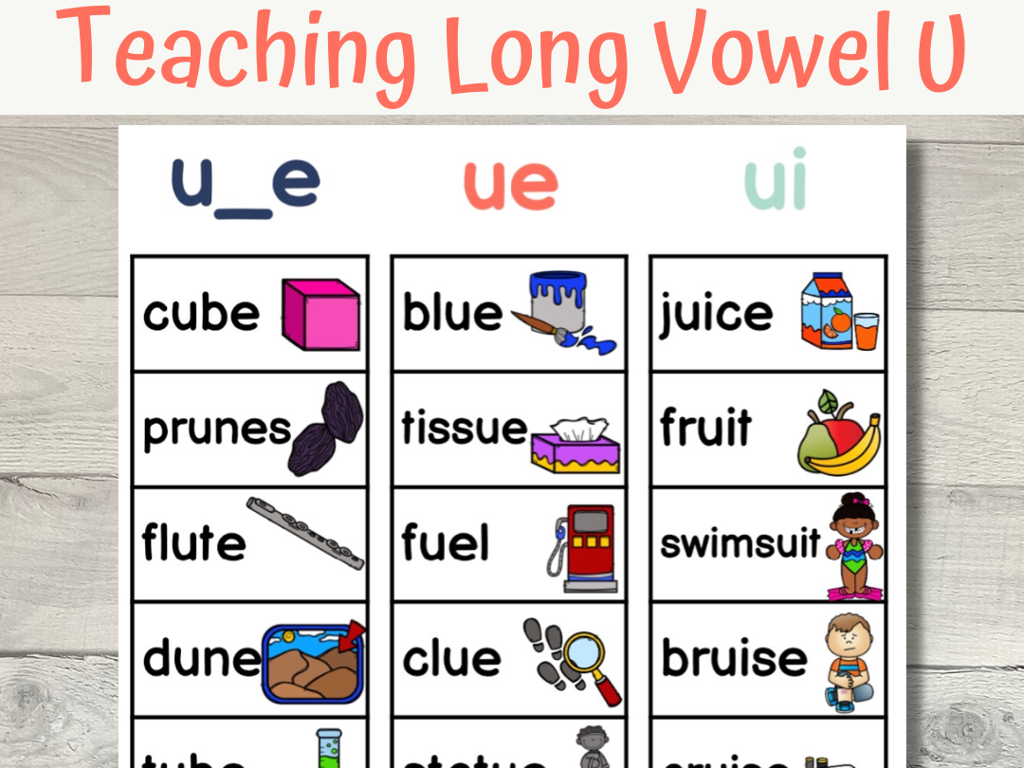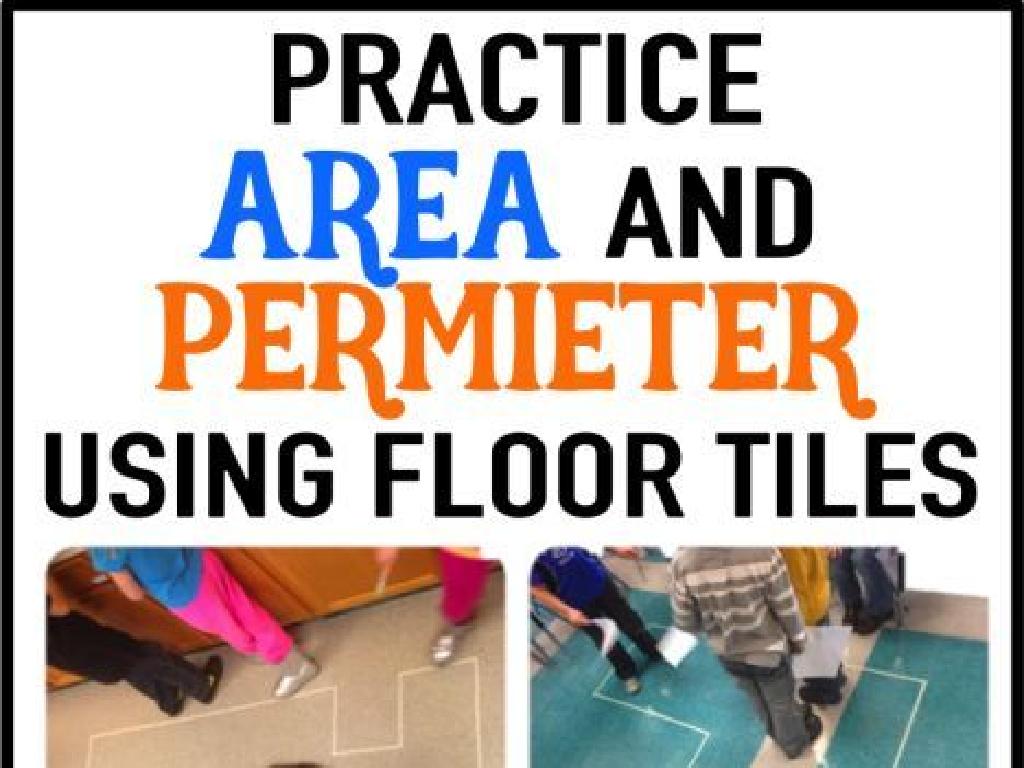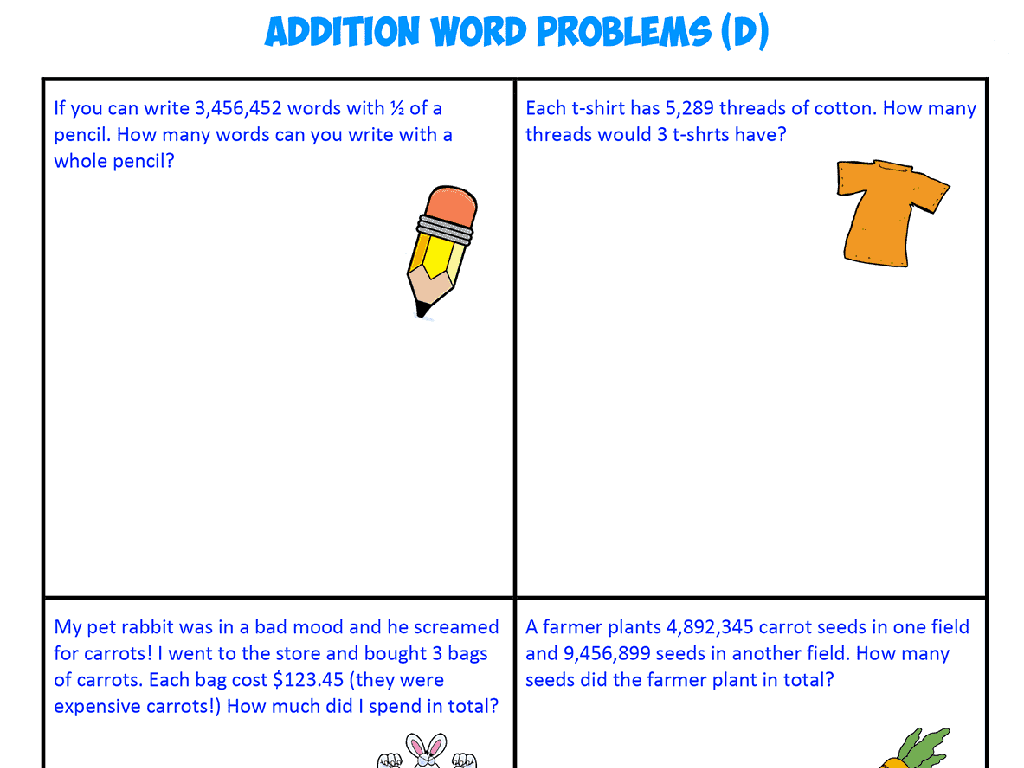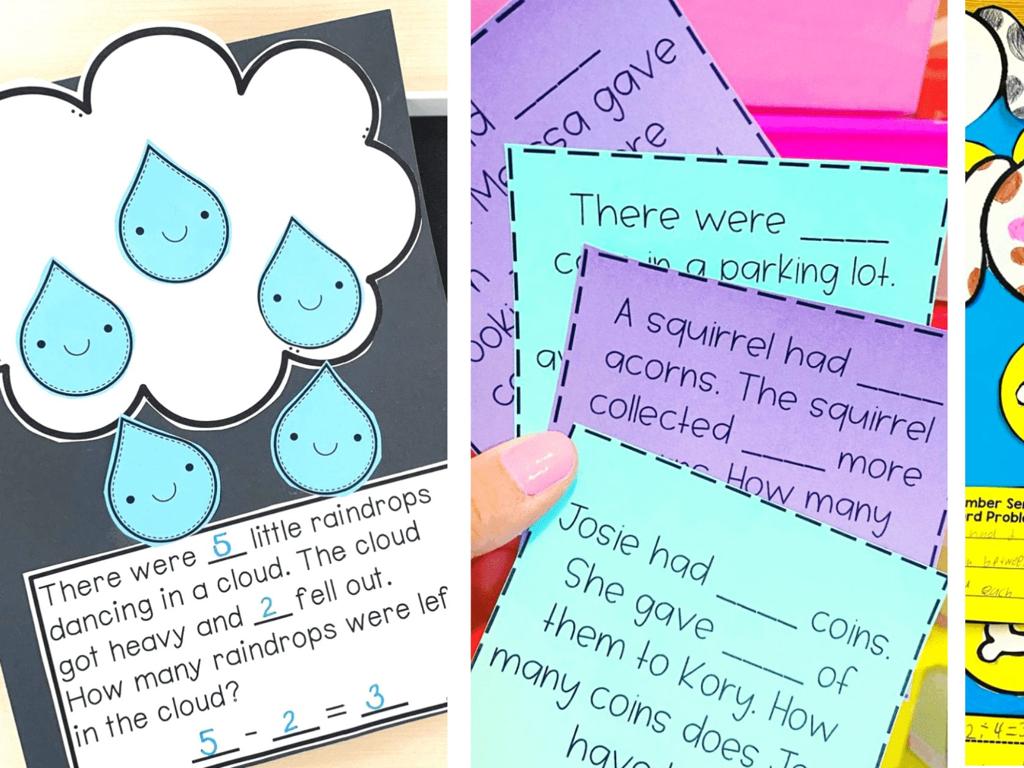Add And Subtract Fractions And Mixed Numbers In Recipes
Subject: Math
Grade: Fifth grade
Topic: Add And Subtract Mixed Numbers
Please LOG IN to download the presentation. Access is available to registered users only.
View More Content
Introduction to Fractions in Recipes
– What are fractions?
– Fractions represent parts of a whole
– Numerators vs. denominators
– Top number (numerator) and bottom number (denominator)
– Fractions in daily life
– Pizza slices as fractions of a whole pizza
– Using fractions in recipes
– Measuring ingredients often requires fractions
|
Begin the lesson by explaining that fractions are a way to represent parts of a whole, which is a concept they can see in everyday life, such as in slices of pizza. Clarify the roles of numerators and denominators in a fraction, with the numerator indicating how many parts we have and the denominator showing the total number of equal parts the whole is divided into. Use real-life examples to illustrate fractions, such as dividing a pizza into slices, and then connect this understanding to using fractions in recipes, where precise measurements are often needed. This will help students see the practical application of fractions in daily activities, making the concept more relatable and easier to grasp.
Adding Fractions in Recipes
– Add fractions with like denominators
– Same denominator: just add numerators
– Practice: 1/4 + 2/4
– Combine 1/4 cup sugar and 2/4 cup sugar
– Visualize fraction addition
– Picture pieces of a whole coming together
– Use in cooking recipes
|
This slide introduces students to the concept of adding fractions with the same denominator, which is a foundational skill in working with fractions. Start by explaining that when the denominators are the same, you only add the numerators. Use the practice problem to apply this concept with a relatable example, such as combining amounts in a recipe. Visual aids can help students better understand how fractions represent parts of a whole and how these parts combine to form a new amount. Incorporate this knowledge into a real-world scenario like cooking, where precise measurement and addition of ingredients are crucial. Encourage students to visualize and discuss how fractions are used in everyday life, particularly in the kitchen.
Subtracting Fractions in Recipes
– Subtract with same denominators
– When denominators match, subtract numerators.
– Practice: 3/4 – 1/4
– What’s 3/4 of a cup minus 1/4 of a cup?
– Visual fraction subtraction
– Use pie charts to show parts being taken away.
|
This slide is focused on teaching students how to subtract fractions with the same denominator, which is a simpler process as it involves subtracting only the numerators. Start by explaining that the denominator represents the total number of equal parts, and when these are the same, we only need to look at the numerators. Use the practice problem to apply this concept with a relatable example such as measuring ingredients for a recipe. Introduce visual aids like pie charts or fraction bars to help students better understand the concept of taking parts away. Encourage students to visualize the fractions in terms of real-life objects to make the concept more tangible.
Adding & Subtracting Mixed Numbers in Recipes
– Understanding mixed numbers
– A mixed number has a whole number and a fraction, like 1 3/4.
– Steps to add mixed numbers
– To add, combine whole numbers and fractions separately, then simplify.
– Steps to subtract mixed numbers
– To subtract, ensure fractions have the same denominator, then subtract.
– Practice with recipe adjustments
|
This slide introduces the concept of mixed numbers and provides a step-by-step guide on how to add and subtract them, which is a vital skill in many real-life situations, such as adjusting recipes. Start by explaining what mixed numbers are, using examples like 1 3/4 cups of flour. Then, demonstrate how to add and subtract mixed numbers by keeping whole numbers and fractions separate during the calculation and finding a common denominator for the fractions. Finally, engage students with an activity where they adjust a recipe, practicing these skills in a practical context. This will help solidify their understanding and show the relevance of math in everyday life.
Recipes and Fractions: Mastering Measurements
– Recipes: A blueprint for cooking
– Spotting fractions in recipes
– Look for 1/2 cup sugar, 3/4 tsp salt, etc.
– The need for precise measurements
– Accurate amounts ensure the dish turns out right.
– Impact of measurement on taste
– Too much or too little can change flavor!
|
This slide introduces students to the concept of using fractions in the context of following recipes, which are essentially instructions for preparing food. Emphasize that a recipe is like a math formula that needs exact ingredients to get the desired result. Show how fractions are used to measure ingredients accurately, and discuss why it’s important to follow these measurements precisely. Explain that even a small deviation can affect the taste and quality of the food. Engage the class by asking if they’ve ever experienced a cooking mishap due to incorrect measurements. This will help them understand the practical application of fractions in everyday life.
Adding Fractions in Recipes
– Example: Cookie recipe fractions
– 1/2 cup sugar + 1/4 cup sugar in a recipe
– Steps to add fractions
– Find a common denominator, then add numerators
– Adjusting recipe quantities
– Multiply fractions to increase recipe servings
|
This slide introduces students to practical applications of adding fractions through the context of cooking. Start with a simple cookie recipe that requires adding different amounts of sugar, such as 1/2 cup and 1/4 cup. Explain the process of finding a common denominator to combine these fractions. Then, demonstrate how to adjust the recipe for more servings by multiplying the fractions. This will help students understand how math is used in everyday life and enhance their fraction addition skills. Encourage students to try this at home with supervision and bring their experiences to share in the next class.
Subtracting Fractions in Recipes
– Example: Cookie recipe adjustment
– If recipe needs 3/4 cup sugar but you have 1/2, how much less is it?
– Step-by-step fraction subtraction
– Find common denominators, subtract numerators, simplify if needed.
– Adjust recipe quantities
– Use subtraction to halve or reduce recipe servings.
– Practice with different recipes
|
This slide introduces students to practical applications of subtracting fractions through the context of adjusting recipes. Start with a simple example, such as modifying the amount of sugar in a cookie recipe, to illustrate how fractions are subtracted. Explain the steps to find a common denominator and subtract the numerators, followed by simplifying the fraction if possible. Emphasize the real-world application by discussing how this skill can be used to adjust recipes for fewer servings. Encourage students to practice with different recipes to become comfortable with the concept.
Class Activity: Let’s Cook Math!
– Divide into small groups
– Each group gets a recipe
– Adjust servings using fractions
– Add or subtract fractions to change the number of servings
– Discuss your results
– Share how servings changed and what you learned
|
This activity is designed to help students apply their knowledge of adding and subtracting fractions in a practical and fun way. By working in small groups, students can collaborate and help each other as they work through the math. Each group will receive a simple recipe, which they will need to adjust to either increase or decrease the number of servings by adding or subtracting fractions. After the activity, groups will discuss their results with the class, explaining the changes they made and what they learned. This will reinforce their understanding of fractions in real-world scenarios and improve their communication skills. Possible recipes could include making fruit salad, baking cookies, or creating a sandwich. The key is to ensure the recipes involve measurements that are easily adjusted using fractions.






